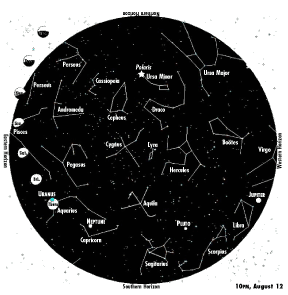 |
Sky Watch
by J. Alex Knoll
|
Tracking the Moon
No matter how big it apppears, the moon is always the same size
The remains of Wednesday’s full moon linger at dusk at week’s end, appearing as a monstrous, yellow-orange orb low in the southeast. Like October’s Harvest Moon and November’s Hunter’s moon, this moon is no larger than any other, even the moons of winter, which appear small perched high overhead. In fact size changes our illusions caused by the moon’s apparent proximity to such “Earthmarks” as trees and buildings.
Proving it makes a great science experiment for kids of all ages. For supplies you won’t need much: some sheets of paper, tape and a ruler.
Thursday’s “big” moon rises in the southeast at 9:10, about one-half hour after sunset, and is only five percent shy of full. Armed with a piece of paper, roll it into a telescope-like tube and target the moon; tighten or loosen your tube until it’s the radius of the moon; then tape it in place. Measure the diameter with a ruler. Hour by hour, as the moon climbs, it “shrinks” until its zenith, around 2am Friday morning. Additional sightings and measurements over that time will all be the same.
You might think that the moon’s place in the heavens season to season affects its size, especially in the heart of winter when it appears ever so far away directly overhead. Continue your measurements with coming full moons and see what you discover: September 8; October 7; November 4; December 4; January 3; February 2; March 3; April 2.
As to the yellow-orange glow of these late-summer and autumn moons, you might think it’s caused by the lunar surface or even the color of sunlight. In fact, the tint is caused by the shallow angle at which moonlight enters our atmosphere, which distorts the rays and even filters out some colors.